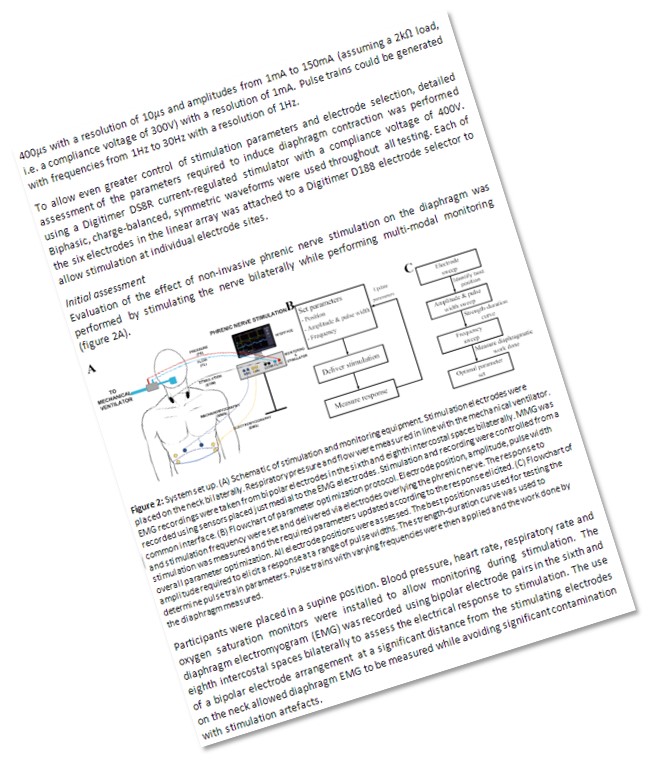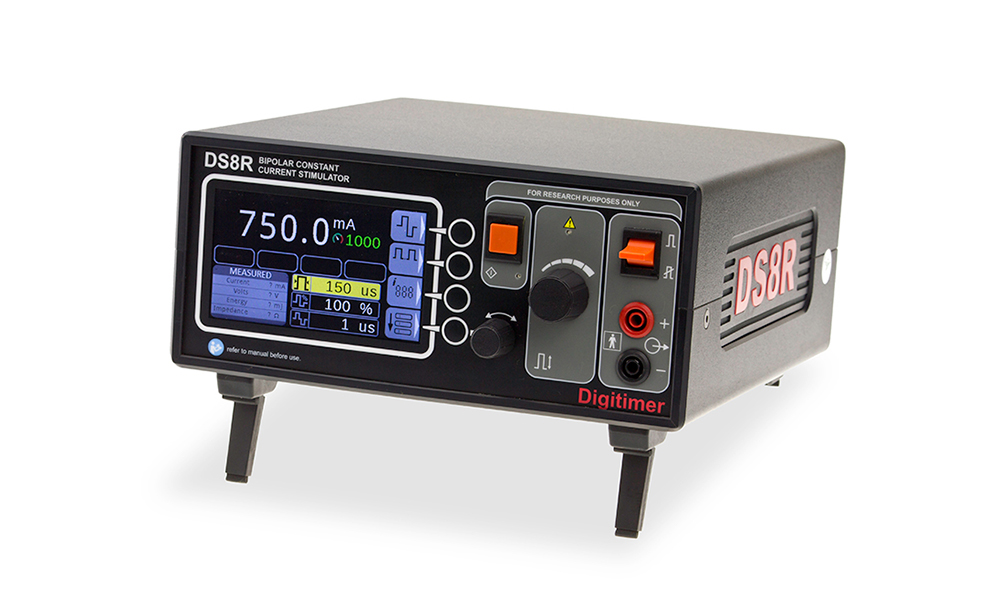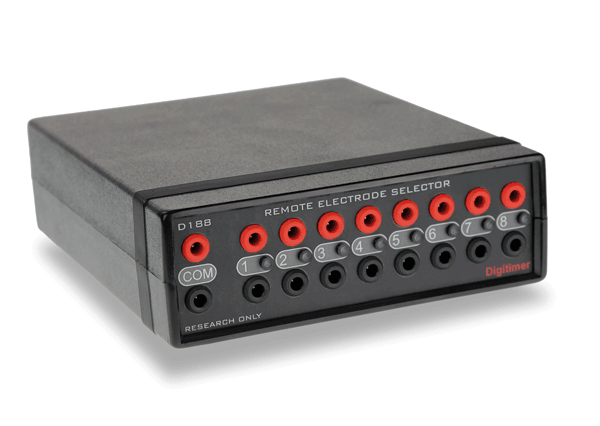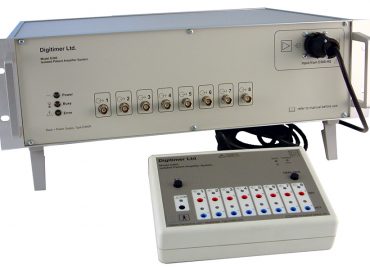Research News
Non-invasive phrenic nerve stimulation to avoid ventilator induced diaphragm dysfunction in critical care
Introduction
It is well known that within 24 hours the diaphragm muscle of patients undergoing mechanical ventilation starts to atrophy and over time this can lead to serious dysfunction due to weakening of the muscle. Previous research has suggested that phrenic nerve stimulation may help to maintain diaphragm muscle strength and avoid patients developing ventilator-induced diaphragmatic dysfunction (VIDD). Unfortunately, the established methods for phrenic nerve stimulation are invasive and associated with risks that could lead to severe complications. As a result, such approaches are not routinely implemented in clinical practice.
While non-invasive stimulation of the phrenic nerve has been investigated in previous studies, for technical reasons, the methods have been prone to the production of pressure sores or even increases in intra-cranial pressure. A new research paper by Conor Keogh and colleagues at the University of Oxford (UK), Universidad de Conception (Chile) and Liverpool John Moores University (UK), demonstrates the successful piloting of a transcutaneous stimulation method for phrenic nerve stimulation during mechanical ventilation. The authors of the paper, which is published in the journal Artificial Organs, are hopeful that their research will lead to the development of a clinically viable method for maintaining diaphragmatic strength during periods of ventilation.
Using the Digitimer DS8R Stimulator and D188 Remote Electrode Selector for Transcutaneous Stimulation via a Linear Electrode Array
As part of the study, the team examined the effect of different electrode geometries and placements. Modified Axelgaard electrodes were used to produce a circular concentric electrode with a 20mm central cathode, surrounded by 30mm i.d. and 40mm o.d. ring anode. They also produced a linear array electrode which consisted of six separate 1cm x 1cm cathodes surrounded by an anode.
Transcutaneous stimulation of the phrenic nerve was undertaken using the Digitimer DS8R Constant Current Stimulator. Stimulation pulses were charge-balanced, symmetrical and biphasic. Durations were varied from 10µs to 400µs and pulse amplitudes from 1mA to 150mA. The effect of pulse trains was also examined using trains of 200ms with frequencies of 1-30Hz. In order to assess the effect of electrode placement and head position, the linear array electrode was connected to the Digitimer D188 Remote Electrode Selector, so it was possible to deliver stimuli to one of each of the six cathodes in order to identify the lowest threshold response.
Subjects were placed in the supine position and a variety of parameters were recorded including blood pressure, heart rate, respiratory rate and oxygen saturation. Diaphragmatic EMG was also recorded to assess the strength of the response to electrical stimulation. Accelerometers placed medial to the EMG electrodes allowed for mechanomyography of the mechanical response to stimulation. Ventilation was controlled by a non-invasive mechanical ventilator which allowed the researchers to ventilate in response to patient triggered breaths or at a fixed rate if required.
A Viable Method for Preserving Diaphragm Strength During Mechanical Ventilation
Results from the study demonstrate that the transcutaneous stimulation technique the authors employed was able to reliably activate the phrenic nerve and produce a diaphragmatic contraction. No serious adverse effects were noted, but some participants did experience discomfort during stimulation, presumably due to the activation of cutaneous afferents or contraction of muscles of the neck. While the authors suggest this discomfort may limit the application of the technique in awake subjects, it would not be a major issue for ventilated patients.
The authors conclude that non-invasive stimulation may provide a valid method for maintaining diaphragm condition during mechanical ventilation, but stress the need for accurate electrode placement, standardised stimulation parameters and a longer-term assessment as part of a clinical trial.
Reference
Keogh, C., Saavedra, F., Dubo, S., Aqueveque, P., Ortega, P., Gomez, B., Germany, E., Pinto, D., Osorio, R., Pastene, F., Poulton, A., Jarvis, J., Andrews, B. and FitzGerald, J.J. (2022), Non-invasive phrenic nerve stimulation to avoid ventilator induced diaphragm dysfunction in critical care. Artif. Organs. Accepted Author Manuscript. https://doi.org/10.1111/aor.14244
Find Out More
If you would like to find out more about the Digitimer DS8R Stimulator or D188 Remote Electrode Selector, used in this study, then please do not hesitate to contact us or our local representative.





